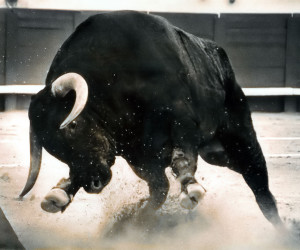El Grande Dolor. The Cuban Barry Bonds. Oso or Yogi. All of these are phrases and nicknames that have been used to describe Chicago White Sox slugger Jose Abreu in recent years. I’m not really sure where those last couple of ones came from, but they’re listed under his profile at baseball-reference, so we’ll roll with it. Side note: can those profiles be edited by the public á la Wikipedia? Perhaps I could just go in and change his nickname to, say, Boo-Boo. Would that make listening to Hawk Harrelson tolerable if he started using random meaningless terms to describe the Sox players? Hmm… probably not. But I digress. Abreu has looked anything but a Cuban version of Barry Bonds or Frank Thomas in the early going. Maybe more like the current version of Thomas, but that’s not exactly what was expected of him coming into this season. We’re almost a month into the 2016 campaign, and Abreu’s been outhomered by the likes of Aledmys Diaz and Scooter Gennett. He obviously brings no speed to the table, and his batting average currently resides under the Mendoza line. In other words, he’s been pretty awful thus far. What’s going on here? Why has Abreu been so terrible this season?
Let’s dig into Abreu’s profile to see if we can figure out what’s causing these early struggles. Here are a few observations:
• His walk and strikeout rates are in line with his career averages. Through 96 plate appearances this season, Abreu has a 7.3% BB% and a 22.9% K%. His career MLB numbers in those categories are 7.0% and 21.1% respectively.
• He’s hitting more fly balls than ever, but fewer of those are leaving the park. Abreu’s current 40.6% FB% is well above his career average of 32.3%, while his 11.5% HR/FB is far below his career average of 22.1%. Perhaps he’s not hitting the ball in the air with the same authority as in years past? Well…
• His average fly ball distance is the highest of his career. In 2014, Abreu’s average fly ball distance was 305.45 feet (5th highest in MLB). In 2015, that number increased to 307.79 ft (6th in MLB). This season, his average distance has increased once again to 322.62 ft (8th in MLB).
• His hard contact percentage is down while his soft contact percentage is up. This seems to contradict the data from the previous blurb, but it’s most likely a result of trading some line drives (career low 12.5% LD% this season) for those extra fly balls. His current 25.0% Hard% would represent a career low, while his 21.9% Soft% would be a new career high. While these numbers appear to be a red flag, keep in mind that players such as Mike Trout, Andrew McCutchen, Giancarlo Stanton, and Manny Machado all have made more soft contact than Abreu this season.
• He’s swinging at fewer pitches outside of the strike zone. Abreu has shown improvement in this area of his plate discipline each year of his career, going from a 41.6% O-Swing% in 2014 to 38.3% in 2015 to a career low 32.9% this season. Outside of his increasing reluctance to chase pitches outside of the zone, very little has changed in terms of his overall plate discipline profile.
• Much like his batting average, Abreu’s BABIP is hovering near the Mendoza line. A drop in BABIP can be expected when trading line drives for fly balls, but a 120 point drop is a bit extreme. His current .213 BABIP is a far cry from the .333 and .356 BABIPs that he produced in the previous two seasons.
Bottom line: The beginning of Abreu’s 2016 season has been disappointing, to say the least. It’s not a good feeling to see your 2nd round slugger hitting .190 with 3 homers almost a month into the season. However, there are reasons to be optimistic moving forward. More fly balls, especially in a band box like U.S. Cellular Field, means more homers in the long run, especially when they’re hit with the kind of authority that Abreu has displayed. If this batted ball profile sticks, Abreu’s average could fall from the .290 range into the .270 area, but 35+ homers is a possibility. Offering at fewer pitches outside of the strike zone could result in a slight drop in K-rate as well. It’s also worth mentioning that the White Sox play 26 games over the next 28 days, with all but three of those games (May 9-11 @ Texas) being played in parks that have finished in the top 11 in terms of RHB HR index over the past three years. The buy low window might not be open for very long. Take advantage while you can.
Final Verdict:



